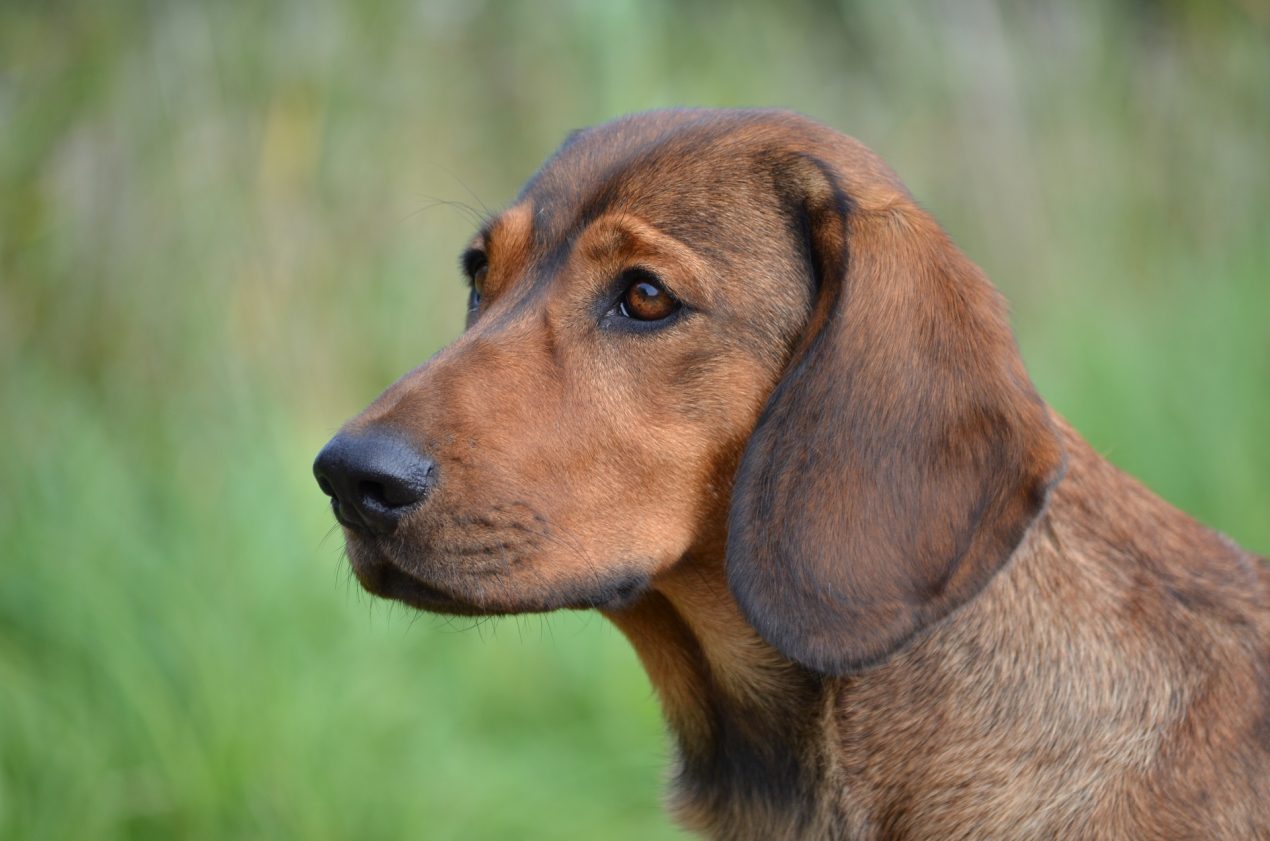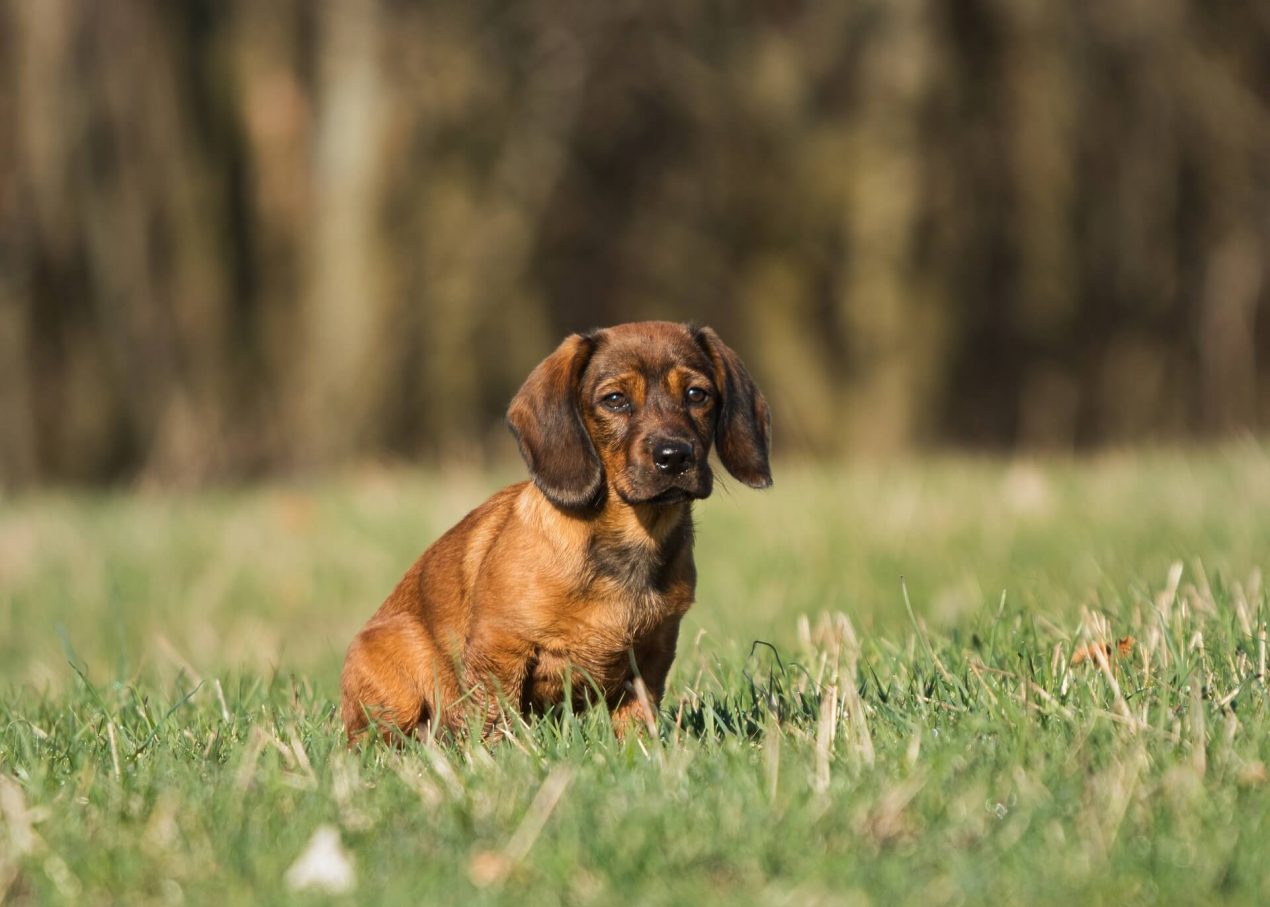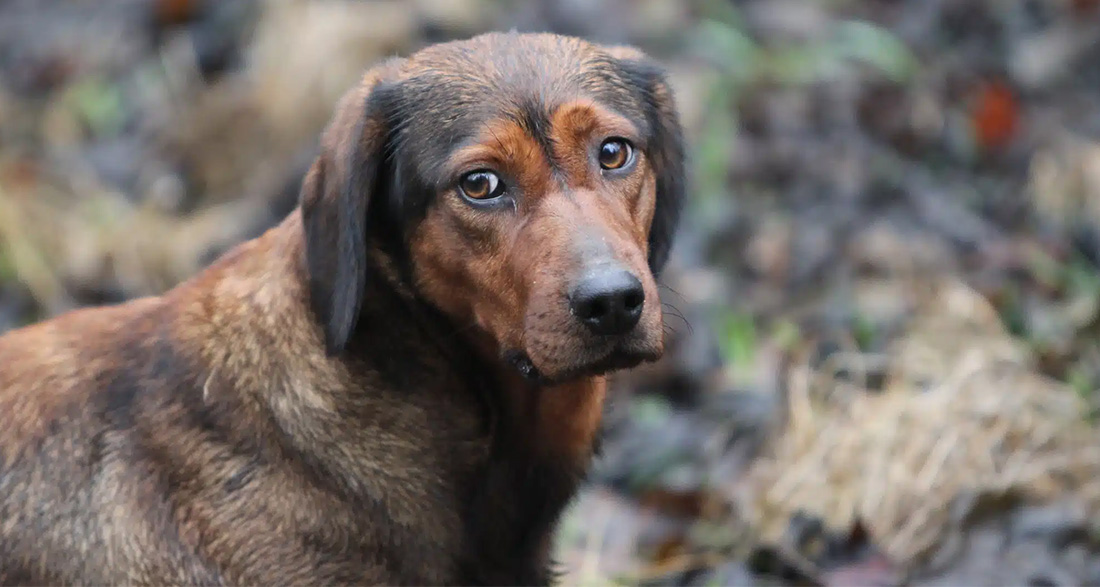The robust Alpine Dachsbracke is highly valued by hunters for its excellent sense of smell and is used in hunting. We’ll explain what else distinguishes the Dachsbracke in the following profile.
History of the Alpine Dachsbracke
The Alpine Dachsbracke traces its origins back to very old, still differently looking ancestors from the Austrian and Bavarian Alps as well as from Switzerland. Its breeding was intensified at the end of the 19th century in the Ore Mountains, which is why it was initially called the “Alpine Ore Mountain Dachsbracke.”
With the founding of the first International Dachsbracken Club in 1896, the pure breeding of the Alpine Dachsbracke began for the first time. After the dissolution of the club and a few years of interruption, the Austrian Dachsbracke Club was founded in 1910, which is still responsible for the pure breeding of the Alpine Dachsbracke to this day. The official recognition of the breed was granted in 1932 by the Austrian Kennel Club and in 1975 by the FCI.
In 1975, its name was changed to “Alpine Dachsbracke,” and Austria was recognized as its country of origin. Therefore, it is also known as the “Austrian Dachsbracke.” It is registered under FCI standard number 254, belongs to FCI group 6 “Scenthounds, and related breeds” and to section 2 “Scenthounds.”
Breed Overview
GROUP: Hound
HEIGHT: 13 to 16 inches
WEIGHT: 33 to 40 pounds
COAT: Dense, short, smooth
COAT COLOR: Dark deer red, sometimes black hairs
LIFE SPAN: 12 to 15 years
TEMPERAMENT: calm, loyal, friendly, willing to work, intelligent, strong hunting instinct
HYPOALLERGENIC: No
ORIGIN: Austria
Appearance of the Alpine Dachsbracke
The medium-sized hunting dog has a strong, muscular body with short legs, which is why it is classified as a low-level dog. Its dense, somewhat dull-looking stock hair, with equally dense undercoat, is ideally reddish-brown with or without black ticking. The Dachsbracke can also have a black coat with red-brown markings on the chest, head, paws, legs, and the underside of the tail, as well as a white chest star. The wide, medium-length hanging ears of the Austrian Dachsbracke are smooth-haired and set high. It carries its hairy tail, which is also set high, slightly downward. It looks out with its “dachshund-like” appearance from deep brown, almond-shaped eyes.
Alpine Dachsbracke Temperament and Character
The robust Alpine Dachsbracke has an excellent sense of smell and a strong hunting instinct. Coupled with its intelligence and courage, it is therefore the ideal working dog for hunters. The Dachsbracke excels primarily in tracking work, i.e., in tracking down shot game during so-called trailing. It has an absolute will to track and pursues its trail calmly, purposefully, and safely, even through water if necessary. It is primarily used for tracking wounded game, such as hoofed game like red deer, roe deer, or wild boar. After flushing out the game, Alpine Dachsbracken retrieve the killed game to their handler.
But even in hunting and tracking hunts, for example, on foxes and hares, the natural-born hunter can show what it’s capable of. When tracking, the small sniffer dog pursues the game with loud barking. Due to its “scent sound,” the hunter can always trace where his four-legged, faithful companion is located.
In the forest and in the mountains, the Austrian Dachsbracke feels comfortable in any weather, thanks to its weather-resistant, water-repellent coat with dense undercoat. Even in harsh terrain such as in the middle and high mountains, the tireless, independently working Austrian tracking dog finds its way around just fine. If necessary, even for hours on end.
If the Alpine Dachsbracke is properly engaged in hunting, it is a reliable, cooperative companion to its handler, who is easy to lead. Its temperament also makes it a friendly and playful family dog, who feels at home with its “boss.” It is extremely stress-resistant with children, always friendly and affectionate. However, if not kept properly and not sufficiently stimulated, it can develop “human-caused” misbehavior. This can manifest itself, for example, in excessive whining or seeking alternative activities.

Acquiring an Alpine Dachsbracke
Alpine Dachsbracke breeders are primarily located in Austria and Germany. They are often hunters or foresters themselves and organized within a club such as the Dachsbracke e.V. This organization breeds puppies responsibly as needed and only provides the little quadrupeds to hunters. Puppies are also provided by the Dachsbracke club, but exclusively to its members.
Costs for an Alpine Dachsbracke:
The price for the little nature enthusiast ranges between $600 and $1,000. At the Dachsbracke club, you’ll pay $660 for a puppy plus club fees of $150 and a membership fee of $67. Additional costs such as chipping or vaccination fees are to be settled with the breeder.
What to consider when purchasing?
You can only buy an Alpine Dachsbracke puppy if you are a hunter. And then you should purchase your puppy from a registered breeder within the breeding association or through the Dachsbracke club. Under no circumstances should you buy Dachsbracken without papers offered at low prices. Responsible breeders always sell their dogs with breeding papers and can provide pedigrees. You should also be allowed to “inspect” the puppy with its mother before the purchase to ensure that it was raised in a reputable environment.
Development and training of the puppy
Like all dogs, the little Alpine Dachsbracke should attend dog school for socialization. Then it should be trained for hunting at an early stage so that it can pursue its passion for hunting and sniffing. Since it is very intelligent, it learns relatively quickly. In addition to love, patience, and empathy, its owner must ensure consistency above all. The quadruped occasionally tends towards stubbornness because independent thinking and acting are required in its work. Well-trained, the furry friend is very cooperative and easy to lead.

How to care for an Alpine Dachsbracke?
Dachsbracke hunting:
The Alpine Dachsbracke is selectively bred as a hunting utility dog, so it should only be kept by professional hunters and used according to its purpose. Hunting training for the Dachsbracke is an absolute must.
The tireless quadruped is happy when it can spend hours with its master or mistress in the forest and mountains working as a hunting assistant. This keeps it physically and mentally stimulated. In its “free time,” it enjoys family companionship. The Alpine Dachsbracke likes to live in a family pack, even with children. As active and “loud” as it is at work outdoors, it is equally balanced, calm, and playful at home. The very alert Dachsbracke can always be relied upon at home. It gets along well with other members of its species. However, it might have some difficulty with other household pets like house rabbits and cats, for example, as it could easily mistake them for prey.
This breed is most comfortable in rural areas due to its love of nature. There, the Dachsbracke can spend hours in the great outdoors. It can also be kept outdoors as long as it has constant contact with its family pack. City life, however, is unsuitable for the quadruped.
Activities with the Alpine Dachsbracke
The Alpine Dachsbracke is a working dog that requires hours of activity through hunting. If its owner happens to have free time, the dog is not interested in taking a vacation. Even then, it needs hours of hiking and mental stimulation. Its owner could, for example, lay down food trails or have it retrieve filled food dummies. Athletic activities involving jumps or runs are unsuitable due to its short legs.
Alpine Dachsbracke Health and Care
The breed is very robust and enjoys long health with appropriate care and balanced nutrition. It can live up to 15 years old. There are even exceptional cases of animals that have lived over 20 years. Potential weak points may include back problems, as often seen in low-legged dogs. To minimize the risk of back problems, overweight must be avoided. This can sometimes be a challenge with the Alpine Dachsbracke, which is often inclined to beg.
The Dachsbracke breed is easy to care for. If its stock hair is dirty, the dirt can be easily brushed out. Brushing should be done especially during shedding to remove dead hair. Since the dog works in the forest, it will bring back ticks and other parasites after work. Therefore, its coat should be thoroughly checked for and rid of these pests.
Its hanging ears need to be checked frequently as they are not well ventilated. Bacteria and germs tend to accumulate there, which can lead to painful ear infections. The Alpine Dachsbracke should also practice dental care by receiving a chew bone or dental sticks daily. Its owner should also brush its teeth with special dog toothpaste. Liverwurst flavor is usually appealing to dogs.
Interesting and Worth Knowing
A total of four scent hound breeds originate from Austria: the Alpine Dachsbracke, the Brandlbracke, the Tyrolean Bracke, and the Styrian Coarse-haired Bracke. The term “Bracke” in the German language refers to a “scent hound.” Scent hounds typically hunt independently and usually do not do tracking work. However, the Alpine Dachsbracke is a tracking dog.
Summary
Alpine Dachsbrackes are only intended for hunters who can properly engage the dog. They love life in the countryside, in nature, and do not enjoy city life. These four-legged companions are also loyal, family-friendly souls who are devoted to their family pack.
Do you have an Alpine Dachsbracke or are you considering getting one? Share with us in the comments what you think makes them special!


